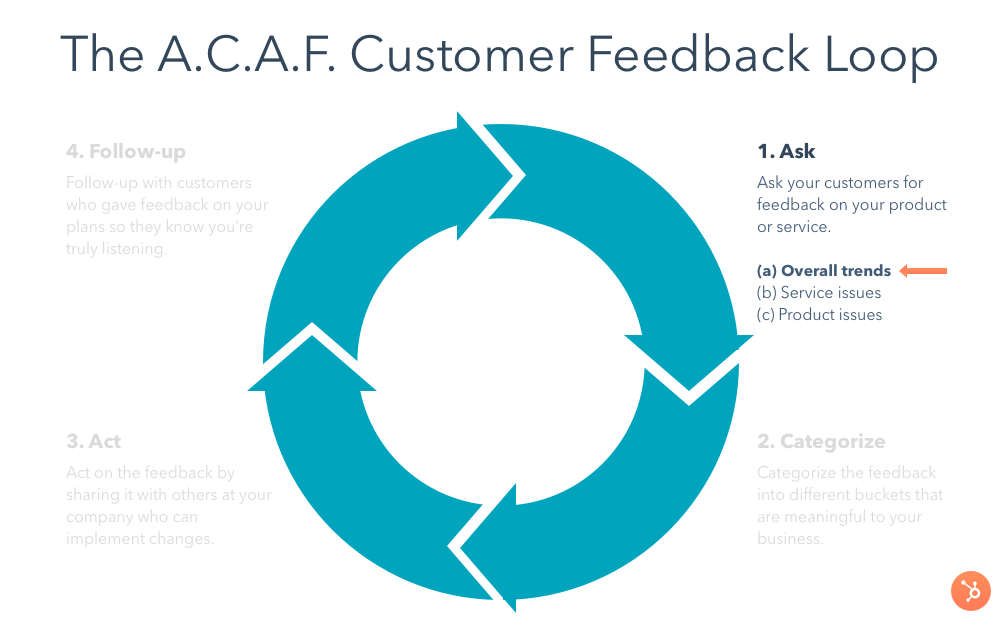If your customers are dissatisfied, they are also unlikely to bring their concerns to you.
According to statistics, 96% of such customers don’t complain to the company directly. However, they are likely to share their bad experience with up to 15 friends. Response rates are low, but companies need feedback to better understand the preferences and needs of their customers.
The lack of response is a reason why more and more companies use various methods to get feedback without asking customers.
Modern companies focus on advanced analytics, using interaction data and interpreting it in order to enhance the quality of interactions. There are also many other methods that can help you piece together the feedback with no need to ask customers for a review of your service or product.
Why Businesses Need to Understand that Customer Feedback is Crucial
Customer feedback can help you improve your services and products. When you learn how your customers perceive your service and what they think about it, you get an opportunity to build a customer-centric culture and to provide the best experience for both customers and prospects.
According to research, as much as 82% of Americans make purchasing decisions after reading online reviews, and 65% of them believe these customer reviews are accurate. People also check company reviews when searching for a job. Therefore, bad reviews can cause a destructive impact on your business.
The only way to prevent bad reviews is to listen to customers and to persuade them that your company is really interested in improving the quality of customer experience.
Most customers who leave negative feedback do it just because they hope other customers will get a better experience. Thus, you should persuade the dissatisfied customers that your company is serious about this issue. In this case, the chances are they won’t share their negative thoughts online.
Obviously, you should also look for positive feedback.
Having quality feedback, you can build customer loyalty. When customers see that you need their feedback, they feel valuable and so are more engaged with your brand. It’s not easy to motivate your customers to leave their feedback, however, many companies are trying new methods to keep their customers engaged and to make them share their opinions.
Most believe, the fastest way to feedback is directly talking to new customers.

(Source: HubSpot)
The thing is that you don’t need to ask your customers for feedback. Quite often, you can collect information on user experience seamlessly, without being annoying or distracting.
Best Strategies to Obtain Customer Feedback Without Asking the Customer
1 Use live chat support
Many customers see a live chat as one of the main advantages of eCommerce websites. Not only is your online chat useful for customers, but it also can help you address a number of issues.
Customers can use an online chat when they cannot find a certain item on your website or when they have any questions about payment, availability of some products, or shipping. In turn, your company can get closer to the customers, as you get more information about their needs and problems they have.
You can also identify common patterns and develop long-term solutions that will help you quickly solve the same issues in the future.
Increase the efficiency of your chat by making it proactive. Let your live chat window appear when customers read one of your web pages for a long time. Share on XA simple way to increase the efficiency of your chat is to make it proactive. Let your live chat window appear when customers read some page on your website for a long time. For example, make it appear every 20 or 30 seconds. This approach can increase the number of interactions by as much as 300%.
You should also ask for feedback after a chat session ends. Ask basic questions about the quality of the chat experience so that you can easily estimate the effectiveness of your support team. If a customer is unsatisfied, you should prompt further actions that will help you restore the trust.
2 Analyze on-site activity
As we’ve already mentioned above, analytics allow you to learn a lot about your users without asking them. Moreover, sometimes such a kind of “feedback” is the most useful one. You can understand a lot about customer experience if you determine how your customers use your website.
For example, if you see that the FAQ section has a bad bounce rate and 0:10 on-page time on average, it becomes clear that you don’t communicate something.
In this case, people are looking for support content but don’t use it. Using various analytics software, you can see what sections are visited most often. You also get data on failed searches and many other parameters. This information allows you to improve the self-service experience.
Businesses can also detect users who didn’t sign up for their product or service.
For example, you can check how many users viewed features, how many of them viewed pricing, and who visited your signup form after that. Thus, you can see at which moment most users change their mind. Without analytics, it’s impossible to get such data directly from users who abandoned your website.
3 Monitor social media
While most customers forget to leave their feedback on your website, they are always ready to do it on social media. Twitter, Facebook, LinkedIn, and Instagram are a great source of customer feedback. There are various tools that allow you to search for posts and comments on a certain topic or for conversations where people mention your brand.
This method is called social listening, and it allows you to improve user experience significantly, immediately responding to any issues. We used the word “immediately” for a reason: It’s very important to react to any complaints on social media as soon as you can.
4 Time surveys
It’s hard to overestimate the role of surveys when it comes to obtaining feedback. You can redirect your users to a survey page after they complete a purchase or you can use pop-up windows. However, these methods may turn out to be not the best choice because they distract your customers.
First, your users shouldn’t be offered to complete a survey right after they enter your website. You need information from people who have already spent some time on your website and so have some opinion on your services or products. We suggest that you show a survey form if a visitor stays on your product page for more than 30 seconds. This way, you will allow your customers to form an opinion before giving you their feedback.
We suggest that you show a survey form if a visitor stays on your product page for more than 30 seconds. Share on XIn addition, you need to position your surveys on the screen so that they won’t interrupt the customer’s activity. If a feedback form blocks the screen, your users will immediately try to close the page. Position your survey form in the bottom right corner, so that your customers can use it when they are ready.
If you want to get quality feedback, you also need to choose the right feedback tool. There are many plugins and programs that help create surveys and offer other ways of collecting feedback. However, all of such tools are different in terms of efficiency and usability.
When choosing a feedback tool, look for software that is easy to use. That provide automated analysis and easily integrate with your CMS, if necessary.
Popular Customer Feedback Tools
Here are a few of the most popular tools that will help you create surveys, analyze on-site activity, and monitor social media.
-
UserVoice
This feedback tool enables your visitors to leave their feedback with no need to register. Obviously, many people choose not to waste their time completing the registration if they just want to leave feedback, so this tool offers a considerable advantage. In addition, it has a search application that makes suggestions as users type their feedback so that they can see if somebody else has experienced the same issue.
-
Survicate
Survicate offers a number of solutions to collect opinions and feedback from your visitors. It also offers a net promoter score to gauge how well your current customers are advocating for your business. Get the feedback with simple options, like a button. Or create deep-level intel through custom forms.
-
SurveyMonkey
It’s one of the most popular feedback tools that enables you to create surveys and research a certain type of audience. It can send surveys via email, as well as using chat software, social media, etc. This tool is perfect for getting insights into customer engagement and satisfaction.
-
Sisense
This data analytics tool was designed not only for data scientists but also for business users of any kind, as well. Thanks to its interactive visualizations and modeling, even users with no technical background can quickly analyze users’ activity and detect important patterns in a few clicks.
-
Crazy Egg
This tool allows you to track your visitors’ activity on the website, seeing how they navigate across different sections, what they are looking for, and where they get stuck most often. You can check session recordings and visual reports to see how your users move their cursor and where they click. Crazy Egg is also easy to integrate with WordPress.
-
Mention
This tool combines social listening and analytics. In addition, it allows you to spy on your competitors on social media. It enables you to monitor multiple accounts on various social media platforms. It also automatically suggests related brands. You get notifications every time somebody mentions your brand, and your feed updates in real time. In addition, you can also quickly evaluate the number of positive and negative mentions.
Conclusion
The best way to improve your services and customer experience is to stay in touch with your customers, getting their valuable feedback.
However, many people are not interested in leaving their feedback. Some people don’t see it as a necessity because they are completely satisfied with their experience. There are also dissatisfied customers who would rather share their opinions with their friends on social media than fill-in a feedback form.
Nevertheless, customer feedback is crucial for any company that is looking for better customer engagement and positive development.
Fortunately, there are methods that allow you to collect feedback with no need to ask your customers for it directly. Analyze information from your support team, use web analytics, and monitor posts on social media where people mention your brand. There are many tools that turn gathering data on customer experience into an easy task so that you can react and improve your service as soon as possible.
Want to help contribute to future articles? Have data-backed and tactical advice to share? I’d love to hear from you!
We have over 60,000 monthly readers that would love to see it! Contact us and let's discuss your ideas!

